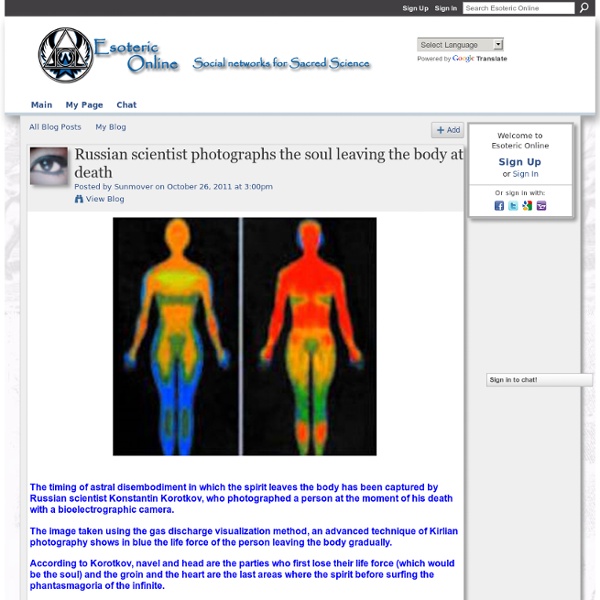Russian scientist photographs the soul leaving the body at death

As the Sun Awakens, NASA Keeps a Wary Eye on Space Weather
As the Sun Awakens, NASA Keeps a Wary Eye on Space Weather June 4, 2010: Earth and space are about to come into contact in a way that's new to human history. To make preparations, authorities in Washington DC are holding a meeting: The Space Weather Enterprise Forum at the National Press Club on June 8th. Richard Fisher, head of NASA's Heliophysics Division, explains what it's all about: "The sun is waking up from a deep slumber, and in the next few years we expect to see much higher levels of solar activity. The National Academy of Sciences framed the problem two years ago in a landmark report entitled "Severe Space Weather Events—Societal and Economic Impacts." Much of the damage can be mitigated if managers know a storm is coming. "Space weather forecasting is still in its infancy, but we're making rapid progress," says Thomas Bogdan, director of NOAA's Space Weather Prediction Center in Boulder, Colorado. Bogdan sees the collaboration between NASA and NOAA as key. Author: Dr.
Susan Joy Rennison Home
DNA Can be influenced and reprogrammed by words and frequencies « Quantum Pranx
by Grazyna Fosar and Franz BludorfRussian DNA Discoveries: Original version THE HUMAN DNA IS A BIOLOGICAL INTERNET and superior in many aspects to the artificial one. The latest Russian scientific research directly or indirectly explains phenomena such as clairvoyance, intuition, spontaneous and remote acts of healing, self healing, affirmation techniques, unusual light/auras around people (namely spiritual masters), mind’s influence on weather patterns and much more. In addition, there is evidence for a whole new type of medicine in which DNA can be influenced and reprogrammed by words and frequencies WITHOUT cutting out and replacing single genes. Only 10% of our DNA is being used for building proteins. It is this subset of DNA that is of interest to western researchers and is being examined and categorized. They found that the alkalines of our DNA follow a regular grammar and do have set rules just like our languages. One can simply use words and sentences of the human language!
Related:
Related:



